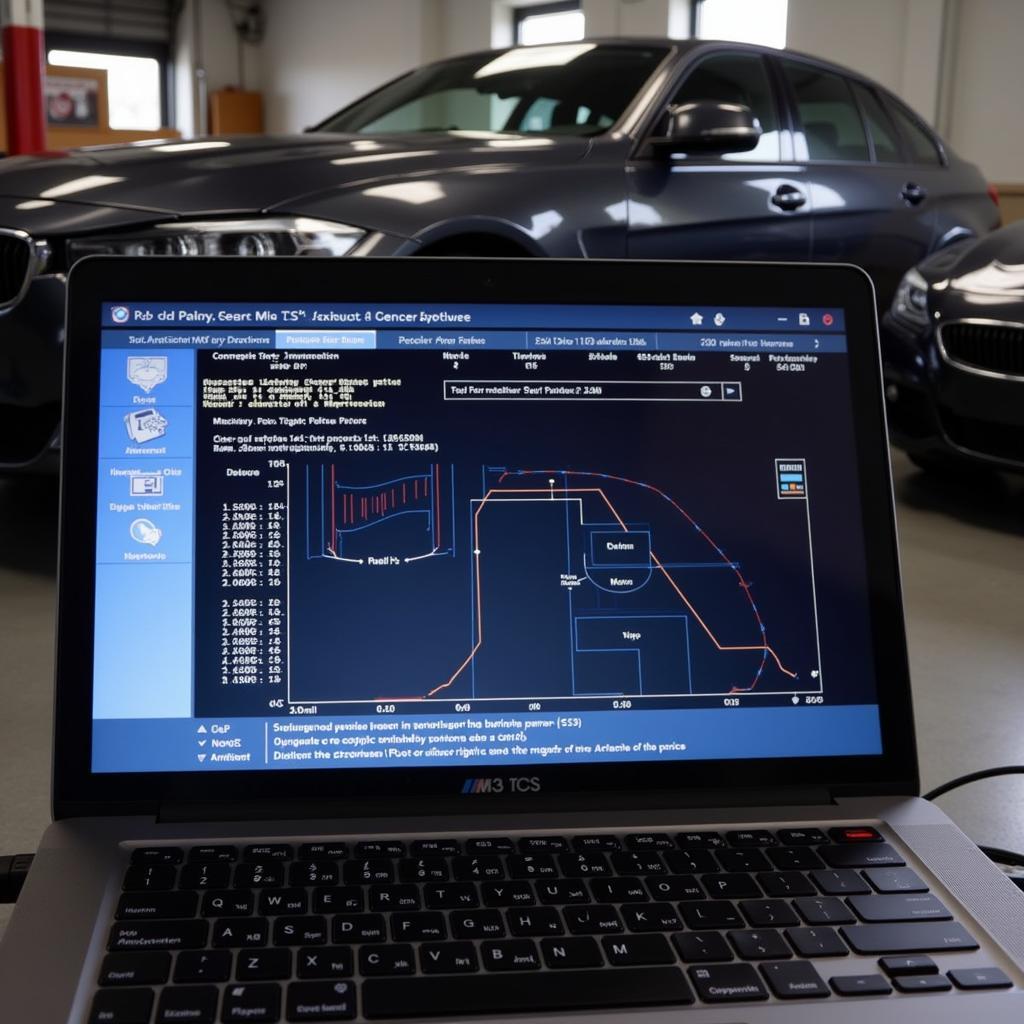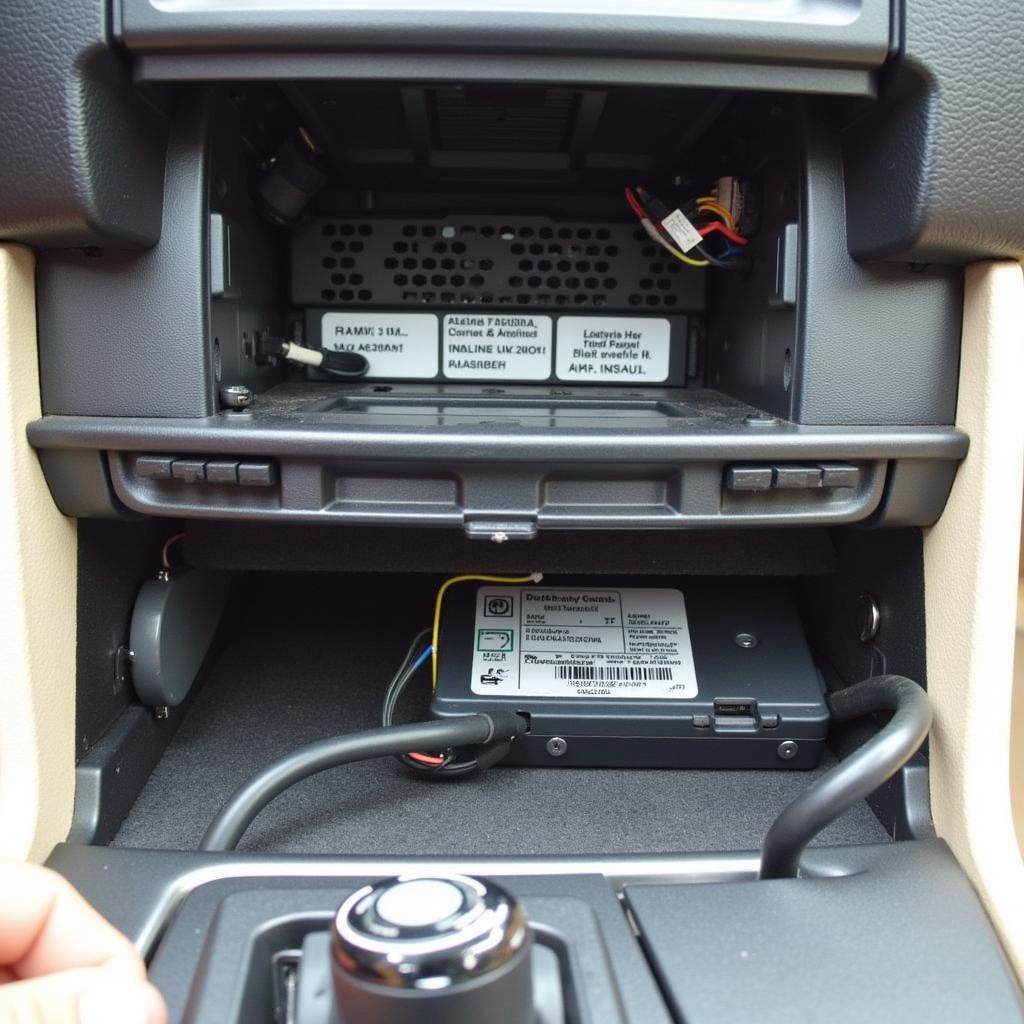The BMW M3 CS exhaust sound is more than just noise; it’s a symphony of performance, a visceral expression of the car’s potent engine. This article delves into the intricacies of the M3 CS exhaust note, exploring its engineering, characteristics, and the factors that contribute to its unique acoustic signature. We’ll also discuss how remote diagnostics and software solutions can play a role in maintaining and even enhancing this critical aspect of the M3 CS driving experience.
The Engineering Behind the Roar: BMW M3 CS Exhaust System
The M3 CS exhaust sound isn’t an accident; it’s meticulously crafted. BMW engineers utilize a complex combination of design elements to achieve the desired acoustic profile. From the diameter and length of the exhaust pipes to the design of the muffler and resonator, every component plays a role. The M3 CS often features a lightweight exhaust system, sometimes incorporating titanium or other advanced materials, which not only reduces weight but also contributes to the distinctive sound. These systems are often designed with active valves that can adjust the exhaust flow and sound depending on the driving mode, offering a range of aural experiences from a subtle purr to a full-throated roar.
If you’re looking to enhance your BMW audio experience in other ways, you might be interested in our guide on bmw m140i audio upgrade.
What Makes the BMW M3 CS Exhaust Note Unique?
The BMW M3 CS exhaust sound is characterized by its deep, resonant tone, punctuated by distinct pops and crackles on deceleration. This signature sound is a product of the high-revving engine, the carefully tuned exhaust system, and the specific firing order of the cylinders. Unlike some competitors that opt for a more artificial sound, the M3 CS maintains a natural, authentic exhaust note that reflects the raw power of the engine.
Why is the BMW M3 CS Exhaust Sound So Important?
For many M3 CS owners, the exhaust sound is an integral part of the ownership experience. It’s an auditory representation of the car’s performance and a key element of its character. The sound enhances the emotional connection between driver and machine, amplifying the thrill of acceleration and the drama of downshifts.
“The exhaust note of the M3 CS isn’t just about volume,” says renowned automotive engineer, Dr. Amelia Hartmann. “It’s about the quality of the sound, the way it resonates through the car, and how it connects with the driver on an emotional level.”
How Remote Diagnostics Can Help Maintain Your BMW M3 CS Exhaust System
While the M3 CS exhaust system is built to last, remote diagnostics can play a crucial role in ensuring its optimal performance. These advanced diagnostic tools can detect potential issues early on, preventing minor problems from escalating into costly repairs. They can also identify software glitches that might affect the performance of the active exhaust valves, ensuring that your M3 CS delivers the desired sound.
You can learn more about utilizing audio in your BMW with our guide on how to listen audio books on bmw.
 Remote Diagnostics for BMW M3 CS Exhaust
Remote Diagnostics for BMW M3 CS Exhaust
Conclusion: The Sound of Performance
The BMW M3 CS exhaust sound is a testament to BMW’s commitment to engineering excellence. It’s a carefully orchestrated symphony of power and performance, a key element of the M3 CS driving experience. Utilizing remote diagnostics and software solutions can help maintain and even enhance this crucial aspect of your M3 CS, ensuring that you continue to enjoy the exhilarating sound of performance for years to come.
FAQ
- What makes the M3 CS exhaust sound different? The unique combination of engine, exhaust system design, and active valve technology creates the distinctive M3 CS sound.
- Can the exhaust sound be modified? Yes, aftermarket exhaust systems can alter the sound, but this may affect warranty coverage.
- How does remote diagnostics help? Remote diagnostics can identify potential exhaust system issues early on, preventing costly repairs.
- Are there different exhaust modes? Yes, the M3 CS often features different driving modes that adjust the exhaust sound.
- What materials are used in the exhaust system? Often lightweight materials like titanium are used for performance and sound enhancement.
- How often should the exhaust system be checked? Regular inspections as part of routine maintenance are recommended.
- Can software updates improve the exhaust sound? Sometimes software updates can optimize the performance of the active exhaust valves, refining the sound.
Common Situations and Questions:
- Scenario: Notice a change in exhaust sound, possibly a rattle or drone. Question: What could be causing this and how can it be diagnosed?
- Scenario: Interested in enhancing the exhaust sound. Question: What are the options and what are the implications for warranty and performance?
- Scenario: Experiencing an error message related to the exhaust system. Question: How can remote diagnostics help pinpoint the issue?
Further Exploration:
Consider exploring related articles on our website for more information on BMW audio upgrades and other features.
Need Support?
Contact us via Whatsapp: +1 (641) 206-8880, Email: CARDIAGTECH[email protected], or visit us at 276 Reock St, City of Orange, NJ 07050, United States. We have a 24/7 customer support team available to assist you.

